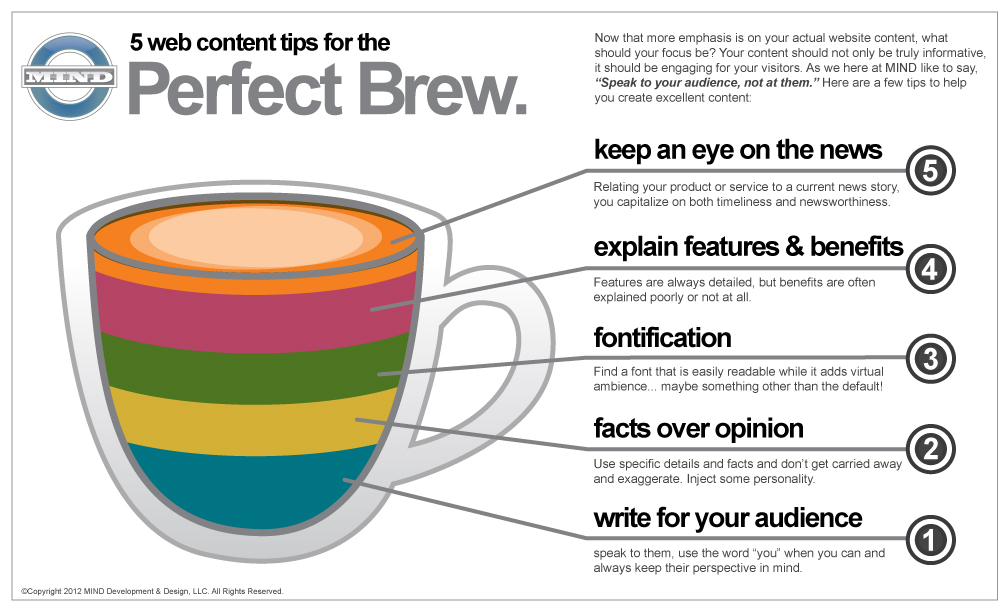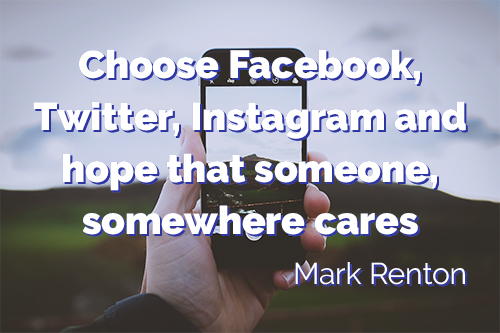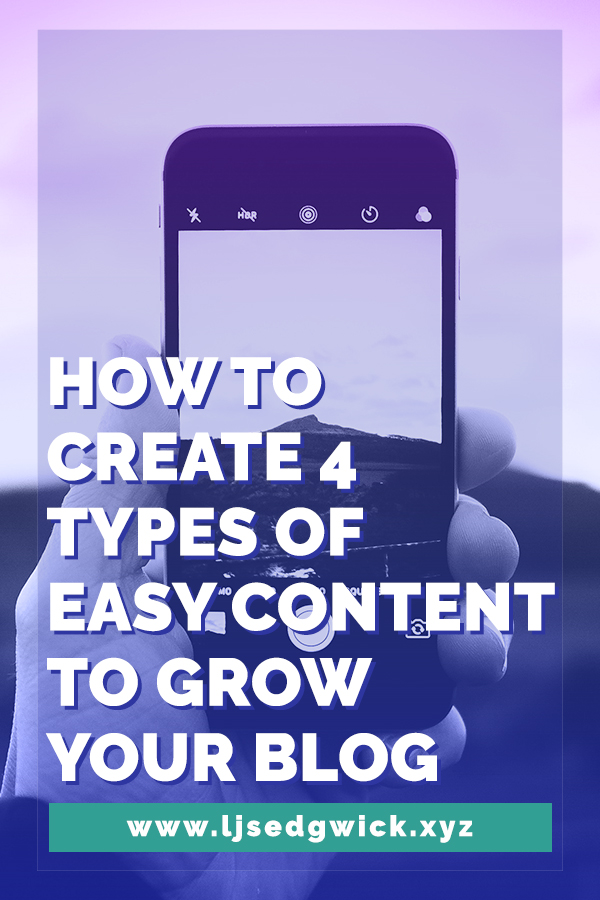You’ve read all of the blog posts. You’ve watched endless webinars. And you’ve probably also joined dozens of email lists, only for their lead magnets to disappear into your Dropbox, never to be seen/read again.
And you know that content marketing is a pretty straightforward way to get your startup in front of new people.
But your content isn’t just a blog. It might sound heretical coming from a content writer. But you don’t just need to rely on the written word. There are other types of easy content that you can use.
I’ve even included a video in this post to explain the value of video as a form of content marketing.
Why? Because you might take in information better through audio. You might prefer to watch facial expressions while you learn.
You have your own learning styles and so do your potential clients and customers.
Including a range of content types is a great way to appeal to them in a way that works for them.
And believe me, I know how difficult it can be to make it work. Blog posts are an obvious choice. You can work on them in parts.
Then you just post them and share them.
You can hide behind your keyboard.
But the world of content marketing is changing. Relying on blog posts isn’t the only weapon you have in your arsenal.
Let’s take a look at 4 types of easy content that can help to grow your blog.
1. Graphics
Few things will get your point across as quickly as a graphic. And you’re lucky because internet users have been trained for years to recognise infographics, photos, and illustrations.
They’re also perfect for sharing on social media. And with 16% of the US population installing ad-blockers, sharing content on social media is often the only way to get it in front of people.
The demand for infographics has increased 800% in the past year. Companies, including startups, want that easily shareable content.

This infographic by Mind Development & Design demonstrates 5 tips to excellent website copy. It distills the content of their listicle and turns it into an easily understandable graphic.
You can always share images and ask followers to suggest a caption. Caption-competitions are a great way to encourage interaction, and you can always offer a prize to the funniest/best/sharpest caption.
And then there’s the shareable quote-based graphic.

Images and quotes are pretty simple to make. I use Photoshop, but you can use something like Canva if you’re not Photoshop savvy. Even mobile apps like Pixlr let you add text to a photo.Graphics can be difficult to make unless you know what you’re doing. Especially infographics.
But infographics can be difficult to make unless you know what you’re doing. So you either need to hire a freelancer who can make them for you. Or learn how to make them yourself.
2. Video
Video is crucial to your content marketing. It’s even become Sujan Patel’s favourite form of marketing.
And 69% of companies report their video marketing budget is increasing.
As users get more accustomed to Facebook Live, it’s only going to get more popular.
But here’s the thing. Video just about terrifies most people. It taps into that same fear that most people have when they have to stand up in front of a group.
Humans are a social species. But we work best in small groups. Unless we’re a particular personality type, we don’t like standing up and drawing attention to ourselves.
That invites ridicule or disagreement. And few want to rock the boat and risk being pushed out of the group. Putting up a video is like standing up in front of the whole world.
But LJ! I hear you cry. Why haven’t you been practising what you preach?
The same reason that you haven’t. Fear.
I don’t mind being on video. After 5 years of teaching teenagers and giving papers at academic conferences, public speaking doesn’t bother me.
But I always worry that people won’t be able to understand my accent. So I stick to the written word where I know I’ll be understood.
That isn’t helping me. It’s hindering me. So expect to see more video content from me soon. Like this video below, explaining the 3 benefits of using video in your content marketing.
3. Podcasts
Perhaps you really don’t like being on camera. But you have no problem in talking to people.
Podcasts could be your chosen form of content. For startups, they’re often an ideal way to talk about your subject and position yourself as an authority.
You can interview others to get their take on your industry and give your own.
And because of the way a lot of people consume content – on smartphones – you’re often talking directly into someone’s ear.

It’s a more passive form of consumption. Potential clients can just listen to you while they’re in the gym, making dinner, or using public transport. It requires less input from them.
It’s probably better for a B2B offer. So if your startup is around email marketing, having a podcast that teaches listeners how to use it effectively will be best aimed at marketing managers in your target niches.
But there’s nothing stopping you from trying podcasts for B2C as well. Just make sure you’re helping your potential customers in some way.
Check out these suggested podcasts for startups and entrepreneurs.
4. Webinars
Before you dismiss me out of hand, how many webinars have you actually attended?
I know they sometimes get a bad rap. I certainly think there’s nothing worse than an hour long webinar that spends 15 minutes giving a bio of the speaker, 15 minutes of actual content, 20 minutes of hard sell, and then 10 minutes of Q&A which tends to descend into ‘this is why you need this product’.
But I’ve definitely bought products off the back of a webinar. I invested in Lacy Bogg’s Content Intelligence Academy following on of her webinars. While the free information in the webinar was amazing, I knew I’d get that little bit more from the program. And I was right.
That’s why they’re among these types of easy content.
So think about how you can partner up with someone to do a webinar.
Let’s go back to the email marketing example. You know you’re not really big enough to compete with Mailchimp or Aweber.
But your offering is very different. Your platform would be ideal for the hospitality industry.
Make contacts in that industry, and see if you can guest on a webinar. Maybe a marketing guru in the industry will host you. Use the kind of content you’d put in a series of blog posts to fuel your content in the webinar.
And because people can ask questions, you get plenty of interaction with potential users. You can answer their specific questions right then and there.
If nothing else, you should be able to add the attendees to your mailing list. So even if they don’t buy from you during the webinar, you can keep in touch and make your offer again in future.
You can also direct them to your blog posts, which will (because you’re a good marketer) have the option for them to share to their own social networks on them.
You don’t have to do them all at once.
I’ve given you 4 types of easy content to help grow your blog. But you absolutely do not need to use them all at once. Pick one and try it out. Try creating shareable quotes or graphics for your social media channels.
And pair them with infographics that you post on your blog.
Keep it up for a month or so. Then review your analytics. Is there an obvious difference?
Or you could try guesting on a few podcasts before you launch your own. Remember that any form of content will need to be created and shared on a regular basis before you’ll really see the difference.
But done right, you will see a difference to your mailing list or your blog. Or hopefully both!
If you’ve enjoyed this post, then why not share it to your own social networks? Or get in touch if you want help coming up with scripts for your video content!





[…] images or video – we’ve already discussed types of content to improve your blog […]